Global Innovation Platform is a novel approach to support and leverage innovation initiatives while defining and addressing major societal challenges
What is the Global Innovation Platform
Global Innovation Platform (GIP) is the eco-system booster for challenge driven innovation, tailor-made for cities, regions and companies.
By integrating an innovative IT solution, strategic advice, matchmaking opportunities and a tool-set of services, GIP:
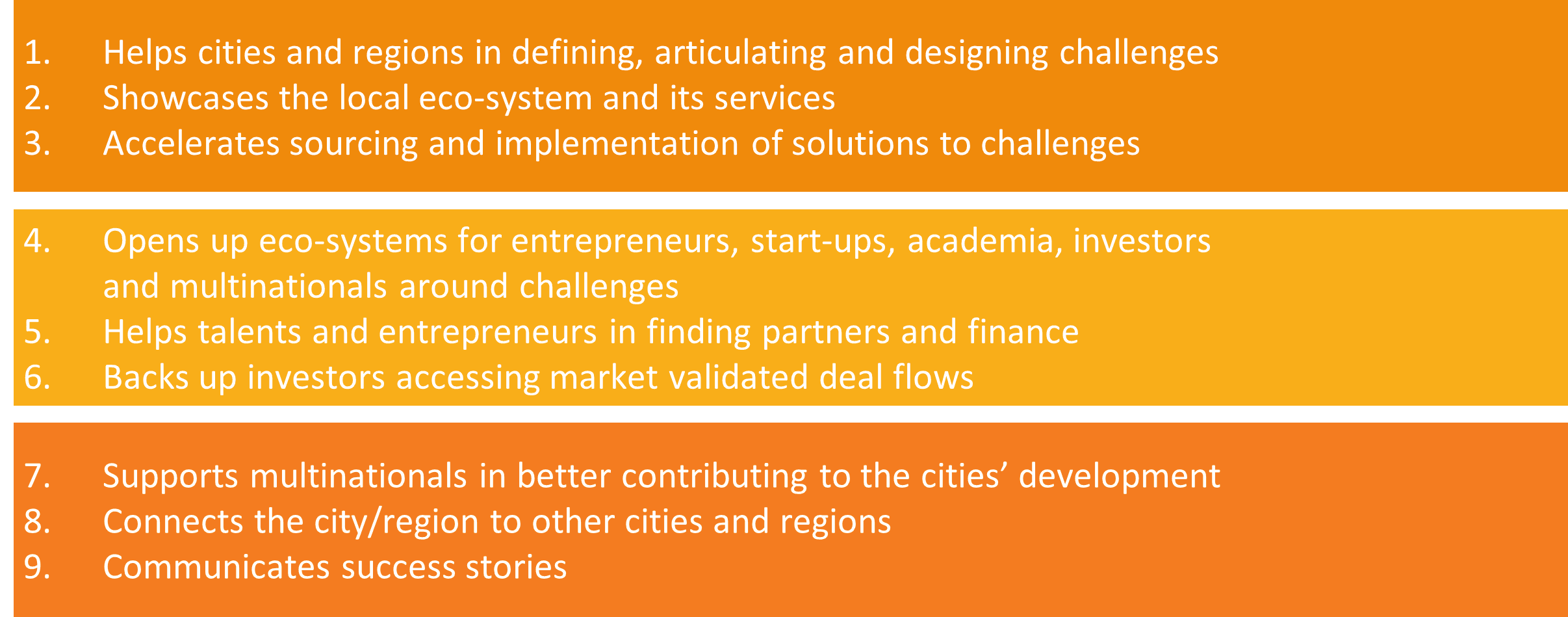
Challenge Driven Innovation
Shifting from a managed to an entrepreneurial economy is one of the most important challenges developed economies are facing. Knowledge is increasingly replacing physical capital and labor as the key driving force of growth. Individuals, rather than large firms, are the leading factor in new knowledge creation.
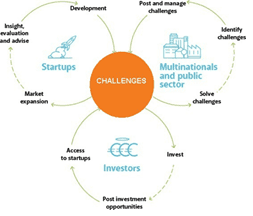
Alongside with large conglomerates, new and small firms play a dominant role in translating newly created knowledge into marketable goods and services. Traditional industrial policy (antitrust laws, small business protection), has been replaced by a much broader entrepreneurship policy aiming to promote entrepreneurial innovation and to facilitate high-growth potential start-ups.
Challenge driven innovation provides a framework to accelerate innovation outcomes by leveraging open development, crowdsourcing strategies and entrepreneurship, along with defined methodologies, processes, and tools. It helps cities, institutions and companies to develop and implement actionable solutions to key problems and challenges that their constituents (citizens, entrepreneurs, employees, educators, students, industry partners, etc.) face.
From strategy to action
GIP’s main mission is to move from strategy to action by implementing a novel approach for:
- engaging citizens, entrepreneurs, talents, academia, industry and public authorities to turn challenges and new technology trends into growth and jobs;
- providing companies and SME’s with innovative solutions to challenges;
- introducing new business and financial models building on public-private partnerships;
- setting KPIs and monitoring results;
- mobilizing stakeholders to set up a dynamic “infrastructure” for nurturing entrepreneurship and, more in general, achieving sustainable development.
GIP approach is different from the traditional one:

Process and KPIs
The Global Innovation Platform brings together citizens, leaders, entrepreneurs, multinationals, investors, smart ideas — to spark positive changes in cities and regions around the world.
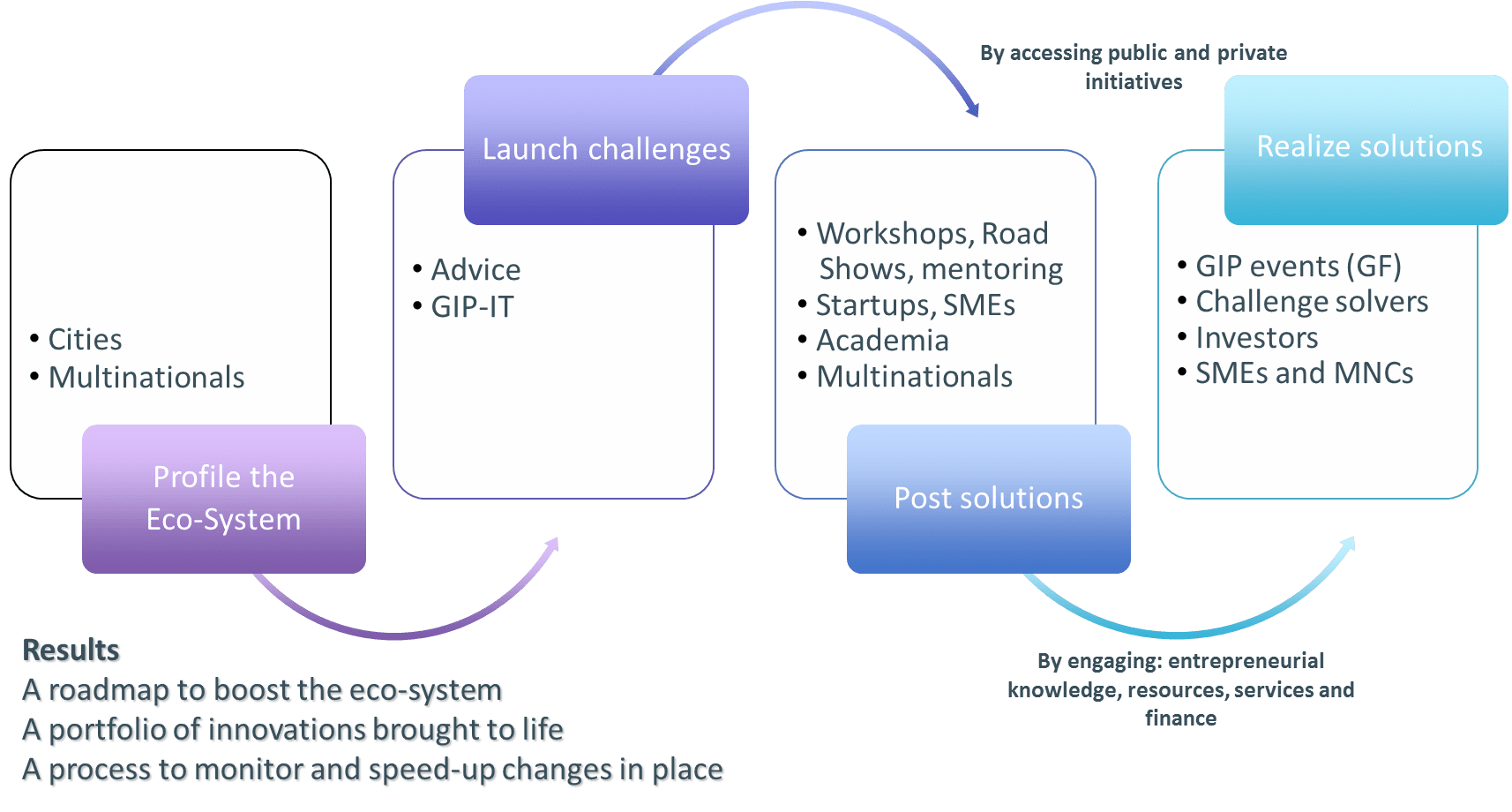
GIP-IT Online Platform
GIP exploits an advanced ICT tool that offers a complete map of the eco-system, facilitates interactions between all the actors involved and simplifies the access to support programs and services.
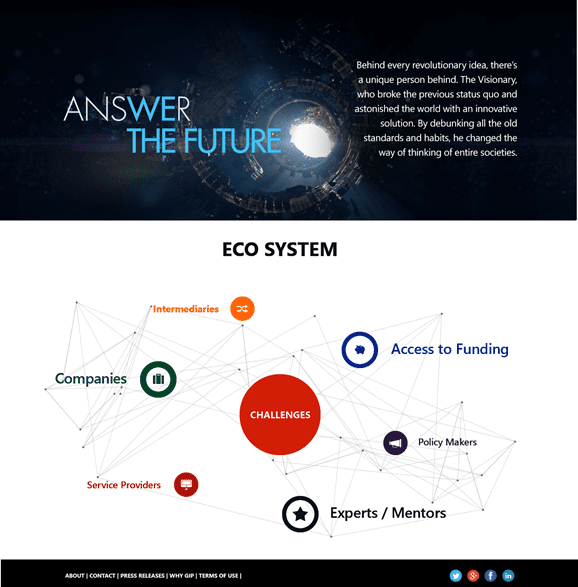
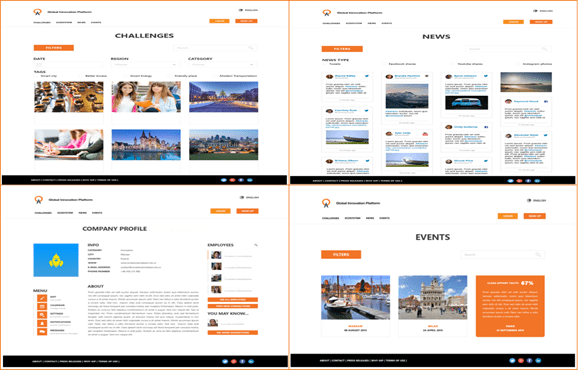
GIP Outcomes and Impact
GIP will solve real challenges, deliver new jobs, create new wealth and boost the eco-system.

Step One: Profile the Eco-System
An exclusive map of the eco-system is the first step of a successful strategy aiming at identifying existing and new opportunities and actions that will help shape the city’s competitive profile over the next years, framing these opportunities into Innovation Territories and establishing the identified initiatives on top of the city’s existing strategy.
The GIP feasibility action provides a representation of how the current eco-system fits into the most recent trends and guidelines for implementing the next steps in the GIP process:

Feasibility Action Steps:
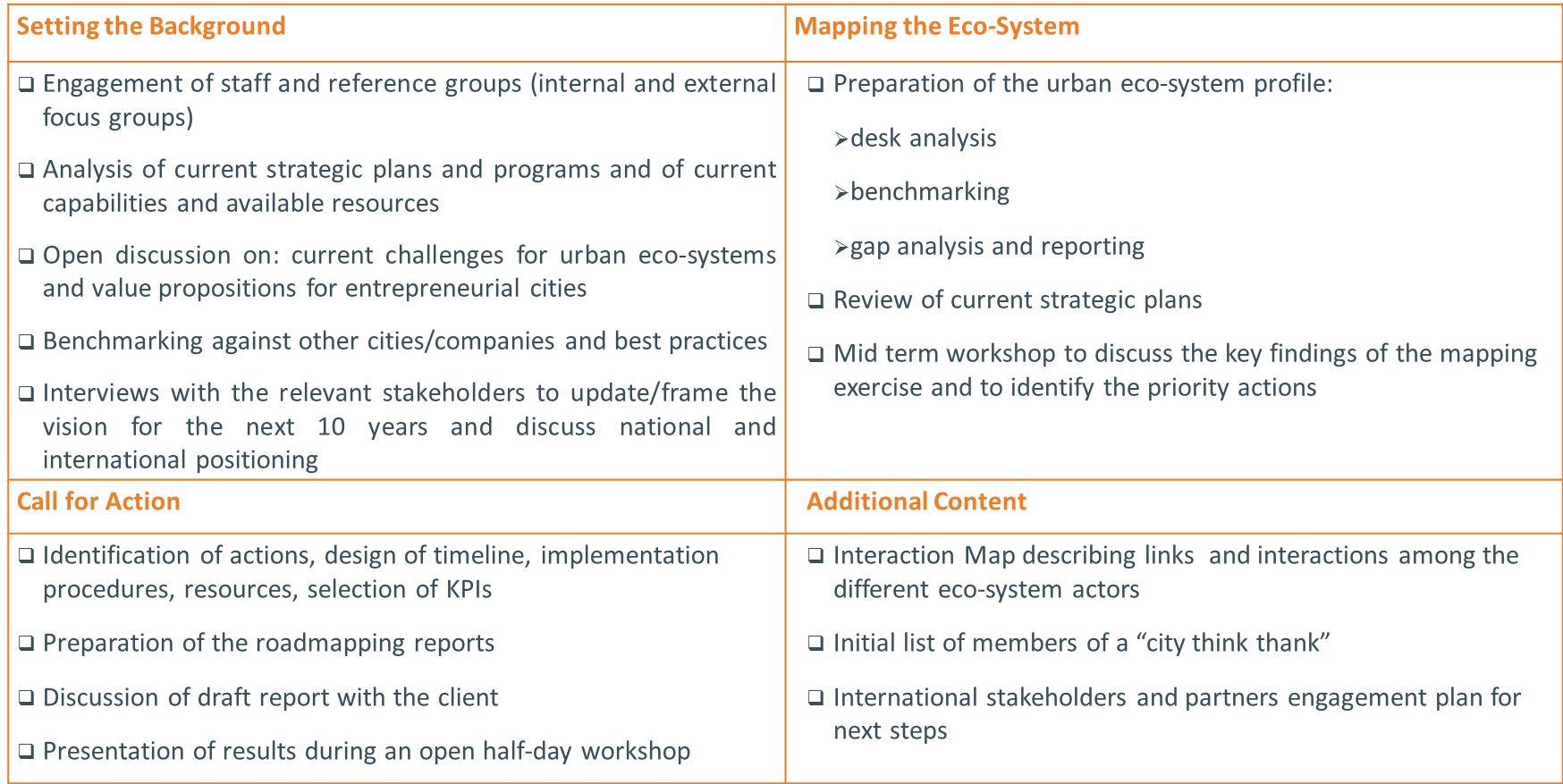
The eco-system profile is organized around the following structure:
- mission, vision, priority plan;
- map of innovation territories (5 years – 10 years – 15 years);
- map of available and planned support programs available in the concerned area;
- profile of the current providers with a short description of services or support provided;
- profile of internal and external key stakeholders;
- positioning of the urban eco-system;
-
SWOT and GAP analysis of the eco-system based on 3 stages (idea generation, opportunity recognition, value capturing) and 2 targets (new companies and existing SMEs).
Do you want more information? Contact us

